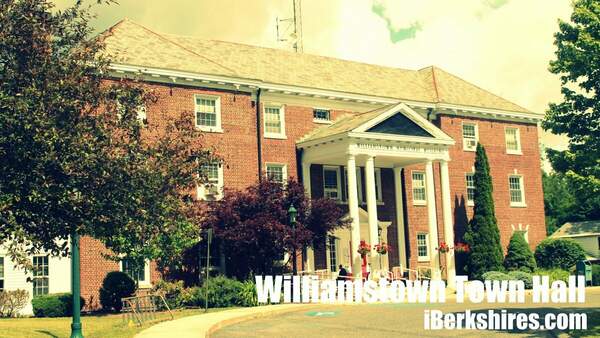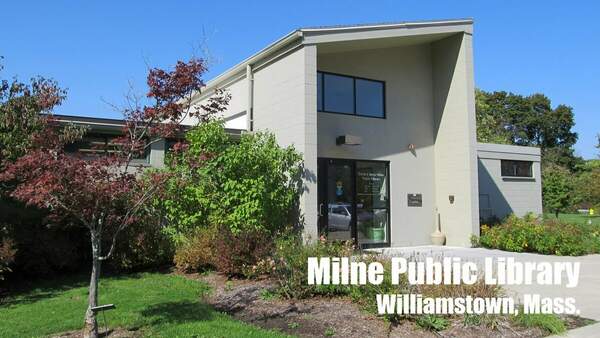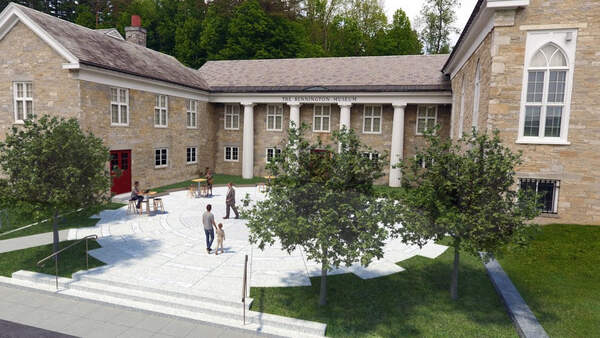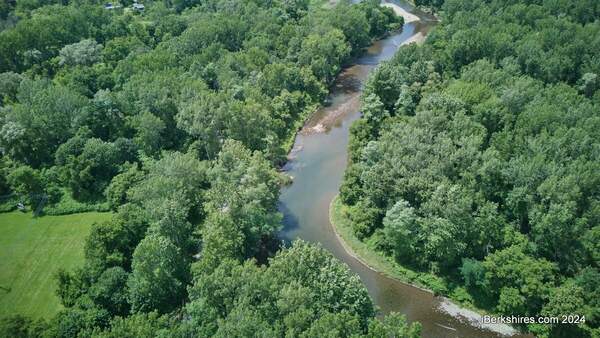
Williamstown Barn Burns After Lightning Strike
 |
No one was injured and no animals harmed but the barn is a total loss, said Carol DeMayo, who owns the family horse farm on North Street with her husband, Richard.
The lightning struck at about 5:30, as a series of severe storms moved across North Berkshire.
"We saw it," said DeMayo by phone. "Our television blew. And five children were in that barn when it hit."
The youngsters had sought shelter in the big haybarn from the rain. Instead, they found themselves in danger as lightning surged through the electrical wiring, spitting out of a light switch and igniting a nearby bale of hay.
DeMayo said the children did the right thing, running out to call for help.
"Because of their quick action, they're heroes and they all got out safely," she said.
.JPG) Photos courtesy Elizabeth Winthrop
The hay barn at Bonnie Lea Farm burns after being struck by lightning. |
DeMayo said five people hit them to force them out as her husband struggled to open the stall guard, but the horses broke through on their own and fled the barn. She thinks all the cats got out, too, but they won't know until they count them tomorrow.
The Fire Department responded to the scene and called Clarksburg and Pownal, Vt., for mutual aid. Traffic was rerouted from Route 7 over Syndicate Road as firefighters tapped into nearby hydrants; neighbors watched the flames from their porches. One described it as "devastating."
Firefighters were still at the scene later that evening and the barn was still smoldering, said DeMayo.
"All of Williamstown smells like smoke," said Lisa DeMayo, the DeMayos' daughter, who's managed the farm since 1991, offering riding lessons, boarding and training.
This is the second time lightning has struck Bonnie Lea Farm with tragic results. In 2005, two draft horses were killed after lightning hit them while they were out in a pasture.
It was also the second time in a matter of weeks that lightning had struck in Williamstown. Thomas Mahar of Pine Cobble Drive found a lightning strike had taken out a child's swing on a playset in his back yard and left a spidery hole in the ground last month.
Frequent intense electrical storms have boomed over New England this summer. Nearly two weeks ago, a New Jersey man was hit by lightning as he ran across Tanglewood's lawn to a concert at The Shed. And lightning started two house fires in Vermont last month, one of which was fatal. Nearly a dozen people in Dorchester were injured after lightning hit a tree they were under, prompting the state Emergency Management Agency to release warning about the danger.
At Bonnie Lea, lives were saved but nothing else in the barn. The wood structure was used to store hay — a winter's worth is gone. Trunks of tools and tack. Saddles and show bridles.
"We don't know what we've lost," said Carol DeMayo. "We can barely breathe."
But, she added, "Our kids are safe. Our animals are safe."















